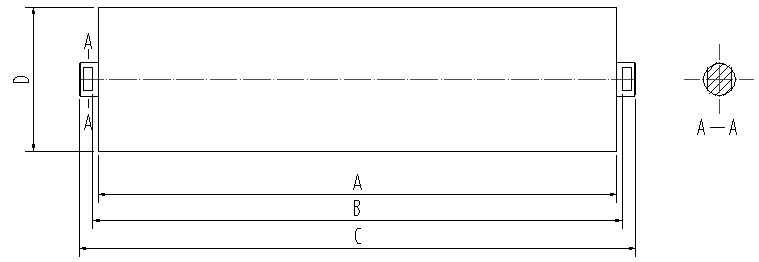 Afrikaans
Afrikaans  Albanian
Albanian  Amharic
Amharic  Arabic
Arabic  Armenian
Armenian  Azerbaijani
Azerbaijani  Basque
Basque  Belarusian
Belarusian  Bengali
Bengali  Bosnian
Bosnian  Bulgarian
Bulgarian  Catalan
Catalan  Cebuano
Cebuano  Corsican
Corsican  Croatian
Croatian  Czech
Czech  Danish
Danish  Dutch
Dutch  English
English  Esperanto
Esperanto  Estonian
Estonian  Finnish
Finnish  French
French  Frisian
Frisian  Galician
Galician  Georgian
Georgian  German
German  Greek
Greek  Gujarati
Gujarati  Haitian Creole
Haitian Creole  hausa
hausa  hawaiian
hawaiian  Hebrew
Hebrew  Hindi
Hindi  Miao
Miao  Hungarian
Hungarian  Icelandic
Icelandic  igbo
igbo  Indonesian
Indonesian  irish
irish  Italian
Italian  Japanese
Japanese  Javanese
Javanese  Kannada
Kannada  kazakh
kazakh  Khmer
Khmer  Rwandese
Rwandese  Korean
Korean  Kurdish
Kurdish  Kyrgyz
Kyrgyz  Lao
Lao  Latin
Latin  Latvian
Latvian  Lithuanian
Lithuanian  Luxembourgish
Luxembourgish  Macedonian
Macedonian  Malgashi
Malgashi  Malay
Malay  Malayalam
Malayalam  Maltese
Maltese  Maori
Maori  Marathi
Marathi  Mongolian
Mongolian  Myanmar
Myanmar  Nepali
Nepali  Norwegian
Norwegian  Norwegian
Norwegian  Occitan
Occitan  Pashto
Pashto  Persian
Persian  Polish
Polish  Portuguese
Portuguese  Punjabi
Punjabi  Romanian
Romanian  Russian
Russian  Samoan
Samoan  Scottish Gaelic
Scottish Gaelic  Serbian
Serbian  Sesotho
Sesotho  Shona
Shona  Sindhi
Sindhi  Sinhala
Sinhala  Slovak
Slovak  Slovenian
Slovenian  Somali
Somali  Spanish
Spanish  Sundanese
Sundanese  Swahili
Swahili  Swedish
Swedish  Tagalog
Tagalog  Tajik
Tajik  Tamil
Tamil  Tatar
Tatar  Telugu
Telugu  Thai
Thai  Turkish
Turkish  Turkmen
Turkmen  Ukrainian
Ukrainian  Urdu
Urdu  Uighur
Uighur  Uzbek
Uzbek  Vietnamese
Vietnamese  Welsh
Welsh  Bantu
Bantu  Yiddish
Yiddish  Yoruba
Yoruba  Zulu
Zulu Different Varieties of Conveyor Belt Rollers and Their Applications
Types of Conveyor Belt Rollers
Conveyor belts are essential components in various industries, providing efficient and reliable transportation of materials from one point to another. At the heart of any conveyor system are the conveyor belt rollers, which play a crucial role in supporting the belt and the loads it carries. Understanding the different types of conveyor belt rollers is vital for optimizing system performance and ensuring longevity and reliability.
1. Trough Rollers
Trough rollers are designed to form a trough shape, which helps in various applications, particularly for bulk materials. The trough shape holds the conveyed materials in place, ensuring they do not spill off the sides. Trough rollers typically come in three-roller sets, working together to maintain a consistent load shape and distribute weight evenly. These rollers are ideal for transporting loose materials like sand, gravel, or coal.
2. Return Rollers
Return rollers are essential for the undercarriage of conveyor systems. They support the return side of the conveyor belt, ensuring it stays aligned as it travels back to the loading point. Return rollers come in various designs, including flat and rubber-coated types. Flat return rollers offer a robust support system, while rubber-coated return rollers provide added durability and noise reduction. Selecting the right return roller is critical to minimize wear on the belt and prevent misalignment, thus prolonging the overall life of the conveyor system.
Impact rollers are specially designed to absorb the shock and impact of materials being loaded onto the conveyor belt. Positioned at loading zones, these rollers are typically equipped with shock-absorbing features that protect both the belt and the structure of the conveyor system. This reduces wear and tear, minimizes maintenance costs, and enhances the efficiency of the conveyor operation. Using impact rollers is vital in high-load applications, such as in mining and quarrying.
types of conveyor belt rollers

4. Carrying Rollers
Carrying rollers, also known as supporting rollers, are responsible for supporting the weight of the conveyed materials. These rollers are usually positioned along the length of the conveyor belt and come in varying sizes and designs based on the load and application. The surface of carrying rollers can be smooth to reduce friction or textured for better grip, depending on the material being transported. Proper selection of carrying rollers is crucial to ensure that they can support the weight without excessive wear or malfunction.
5. Guide Rollers
Guide rollers are used mainly to maintain the position of the conveyor belt as it travels around curves and turns. They help to keep the belt aligned and prevent it from drifting off course, which can lead to material spillage or equipment damage. Guide rollers come in various designs, often with flanged edges to keep the belt securely in place. In applications where precision is critical, such as automated packaging lines, guide rollers play a pivotal role.
6. Special Rollers
In addition to the standard types of rollers, there are several specialized rollers designed for specific applications. For instance, self-cleaning rollers are designed with grooves or special surfaces that reduce the buildup of material. This is particularly useful in applications where sticky or wet materials are handled. Additionally, some rollers are equipped with bearings or seals to increase durability and reduce maintenance requirements.
Conclusion
The variety of conveyor belt rollers available allows for a tailored approach to meet the needs of different industries and applications. From trough rollers that support bulk material transport to specialized impact and guide rollers that enhance operational efficiency, each type contributes to the overall effectiveness of the conveyor system. To ensure optimal performance, it is essential to select the right type of roller based on the specific requirements of the application, load types, and operational environment. By investing in the appropriate conveyor belt rollers, businesses can enhance productivity, reduce maintenance, and improve the longevity of their conveyor systems. Understanding these different types of rollers can thus significantly impact the efficiency and reliability of material handling processes across industries.
-
Revolutionizing Conveyor Reliability with Advanced Rubber Lagging PulleysNewsJul.22,2025
-
Powering Precision and Durability with Expert Manufacturers of Conveyor ComponentsNewsJul.22,2025
-
Optimizing Conveyor Systems with Advanced Conveyor AccessoriesNewsJul.22,2025
-
Maximize Conveyor Efficiency with Quality Conveyor Idler PulleysNewsJul.22,2025
-
Future-Proof Your Conveyor System with High-Performance Polyurethane RollerNewsJul.22,2025
-
Driving Efficiency Forward with Quality Idlers and RollersNewsJul.22,2025





























